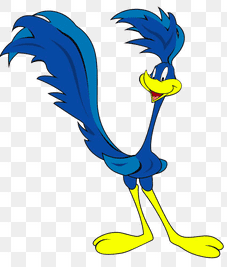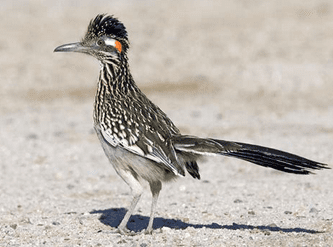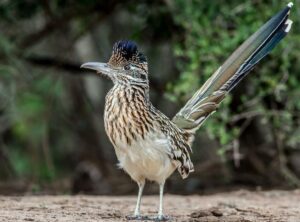What little moisture they consume comes primarily from the blood of their prey. Opportunistic carnivores, roadrunner will eat anything that crawls or slithers along the ground. From insects like beetles and spiders, reptiles like snakes and lizards, to even tarantula and smaller birds, they’re not picky when it comes to supper. The roadrunner is not intimated by the scorpion’s stinger or the fang of a rattlesnake, even though they don’t have the immunity to the deadly venom. Roadrunners risk life and wind for a meal on a regular basis and are the only known predators of the tarantula hawk, and insect with the most painful sting in the world.





